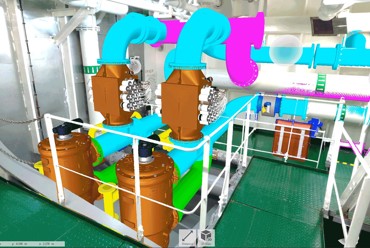
January 2023
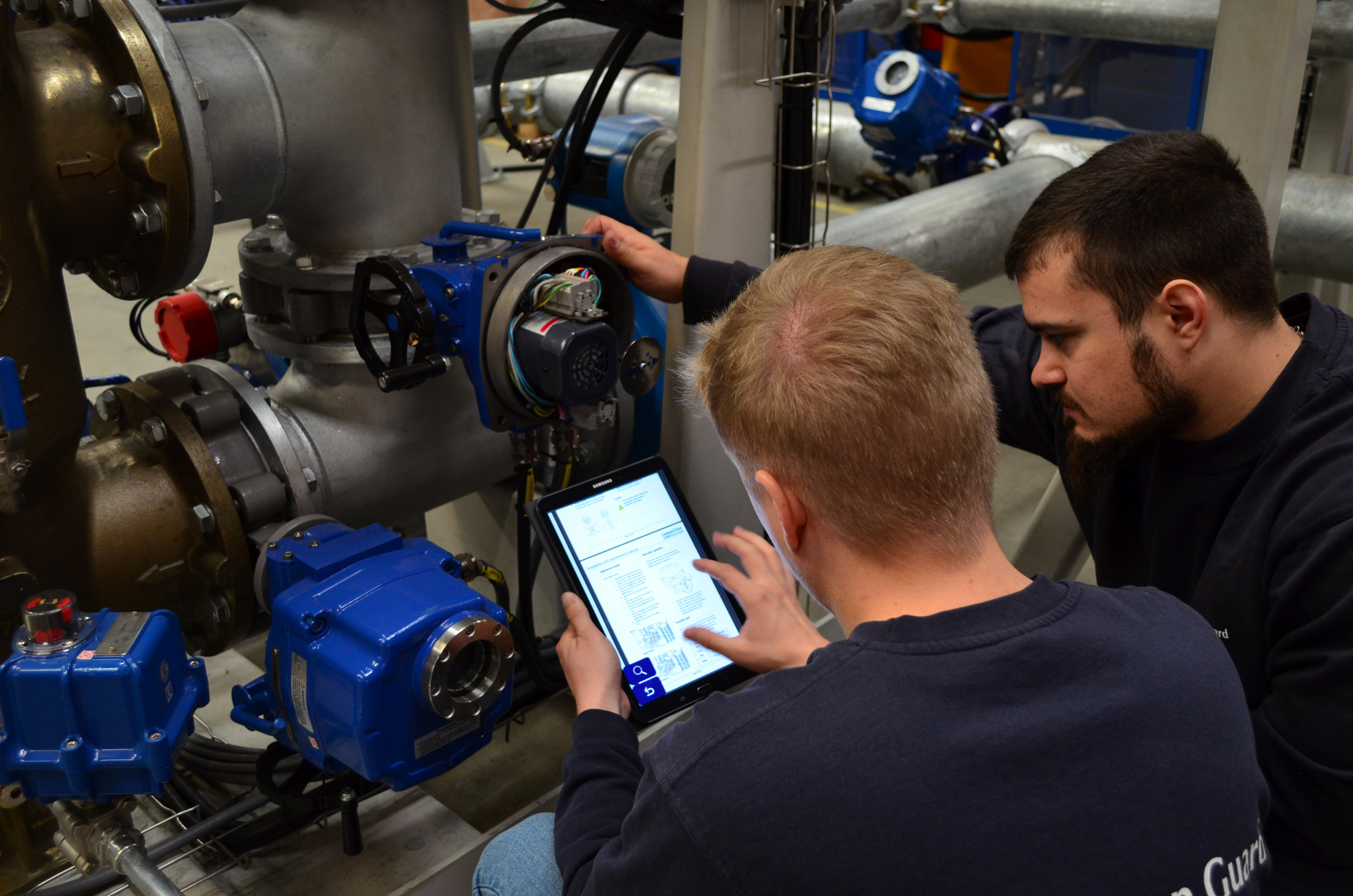
September 2020
Marine engineers and crew members can now train and learn about DESMI Ocean Guard’s CompactClean ballast water management system with two digital offline tools. One is a computer-based training (CBT) program and the other is a mobile app.
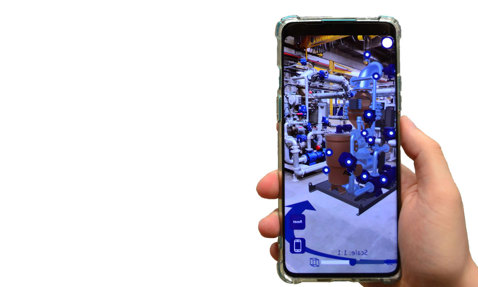
While the e-learning tools were in development long before the Covid-19 pandemic, they come at a good time, says Mark Kalhøj Andersen, Technical Manager and Head of Projects and Engineering, DESMI Ocean Guard.
“It's a huge benefit to have these tools when we are in a situation where people can't meet,” Mark says. “We developed these as a way to reach out to all of our customers and also internally in the organization with a training tool that would enable us to distribute knowledge in a fast and efficient way. Our customers are located all around the world with limited access to internet, and it’s not possible to run everything online.
So we need to be able to distribute offline services that can be operated by downloading the tools when you have internet and then operating them offline.”
The tools will help vessel owners to educate the crew about ballast water legislation. They also help marine engineers to understand the ballast water management system: what it is, how to operate it, and how to maintain and service it.
“These tools can – within one full day’s training – bring anyone who has to operate or maintain the system from 0% knowledge to 80%,” Mark Andersen says. “The last 20% is the hands-on part.”
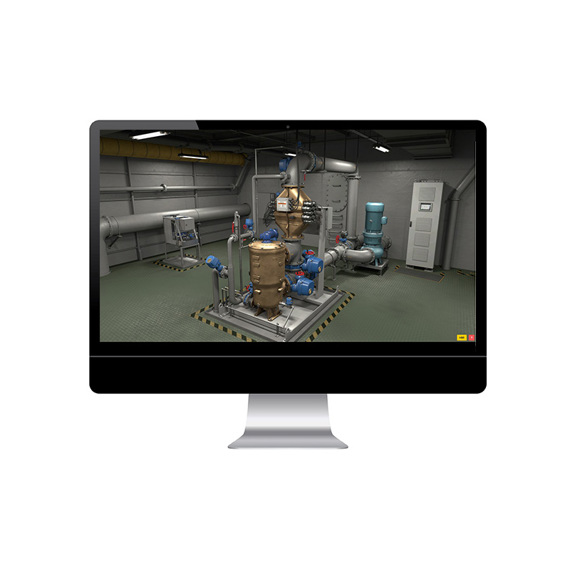
The interactive features help users dive deep with detailed diagrams, pictures and pop-up descriptions of “what is this and why is it relevant for you?”
Users can click on different fields or markings in the diagrams. For instance, the program offers a lot of information on item numbers for spare parts, shown in all system sizes. Users can thus learn how the process and instrumentation diagrams can help in the future of operating their systems, as well as how the tool will help them to install and understand the entire product. By clicking through all the features, users will gain knowledge about how the system is put together on a detailed level of processes and instrumentation.
Likewise, the hardware section takes users all the way down to the smallest components and all the additional features. The software section runs users through the entire process of operating the system with the HMI, human-machine interface.
“By executing this section, you will understand how to operate the BWMS,” Mark Kalhøj Andersen says.
The simulator section is an interactive tool that gives a three-dimensional visualization of the system. Users can click on different features, like operating the valves. “You can click on the HMI. You can learn to operate the system in a digital ‘hands-on’ way,” he says.
Additional chapters feature troubleshooting and maintenance. A test section gives users an indication of how well they have understood the system (a 70% result gives a test “pass”).
To get your free copy of the CBT tool, visit CompactClean CBT or send a request to DESMI’s BWMS support (ServiceDOG@desmi.com).
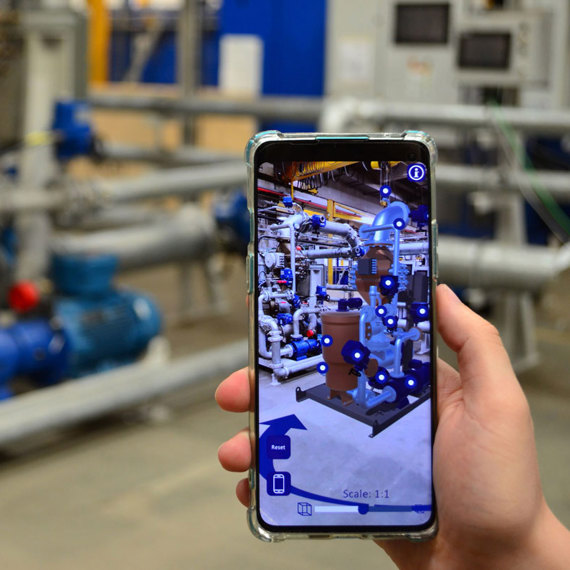
The app is a visual, interactive maintenance manual. In other words, it is a disruptive interactive manual for a smartphone, to train and support the user in a new and effective way. It also has a 3D visualization element, where the user can drop into specific maintenance sections for every single component by pressing the dot on the component.
Additionally, a frequently asked questions section offers quick answers to the most common queries.
The app also features an augmented reality (AR) tool. Users can point their camera toward a plain surface, press a button, and a 3D version of the system appears on the floor of the room where they are standing. “You can walk around this system. And you can press on the different components to investigate what it is and how to do maintenance and service” says Mark Kalhøj Andersen. “If you don’t have an actual physical system yet, but you know you’re going to, you can do the initial training in a digital 3D version with your smartphone. It’s super cool.”
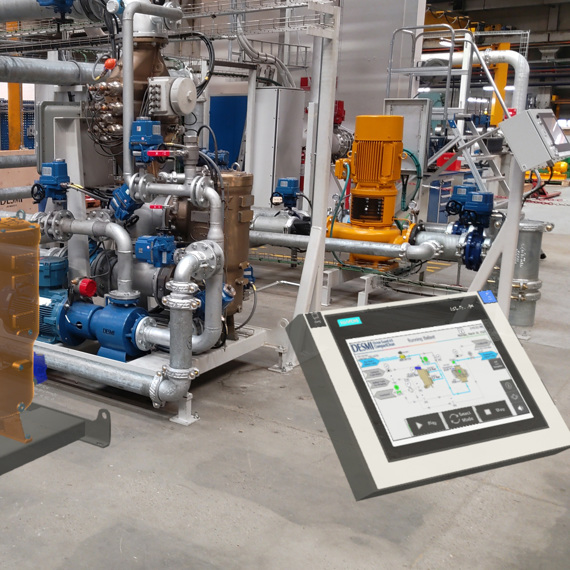
A physical training facility is also located at DESMI world headquarters in Nørresundby, Denmark. “We are most happy to invite customers to our physical training facility as well,” Mark Kalhøj Andersen says – that is, when the global Covid-19 situation clears and again allows safe international travel.
DESMI has long used the facility for not only customers, but also to train its own service engineers and new employees with a physical installation of the entire ballast water management system.
Additionally, the facility enables DESMI to further develop and test new features to the system.
Mark says there is one extra digital feature at the physical center that is a must for visitors: the HoloLens 2 AR headsets. “You put on these goggles and enter into an augmented virtual environment,” he says. Like the mobile AR app, you can walk around a virtual version of the CompactClean system and interact with it, but the headset environment is a deeper step into the digital world. “You can physically with your hands operate the BWMS, open different components and look inside while walking around the product with these goggles on.”

January 2023
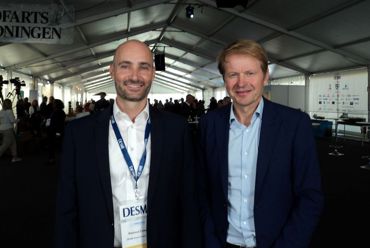
January 2023
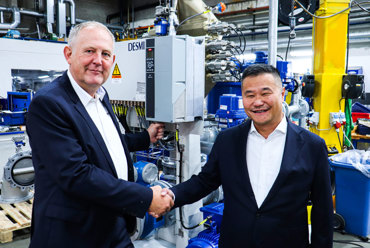
November 2022
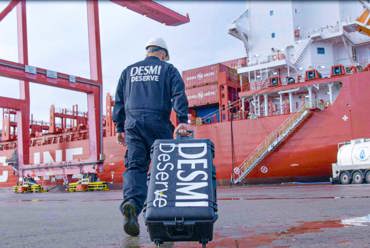
August 2022